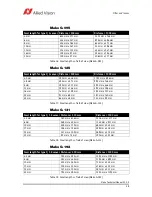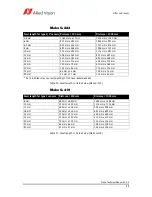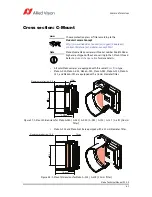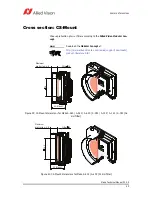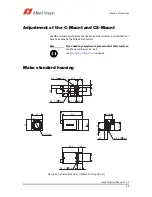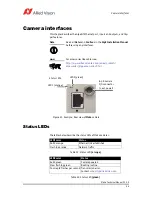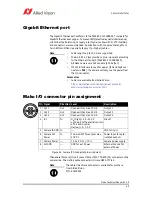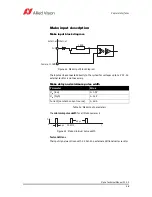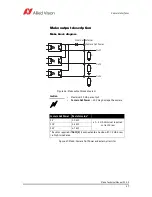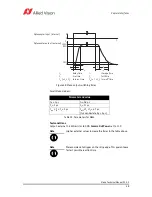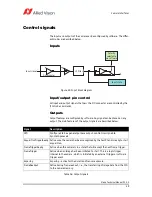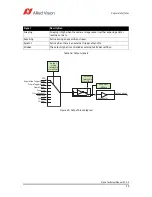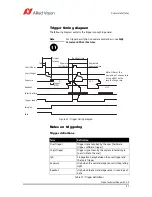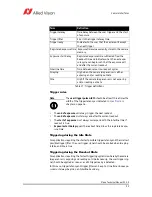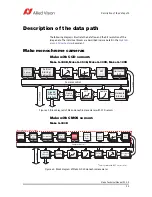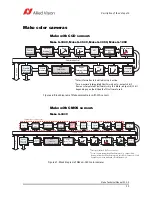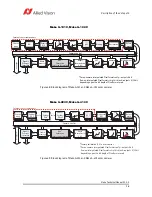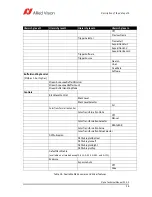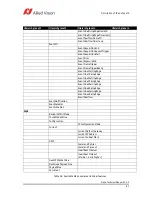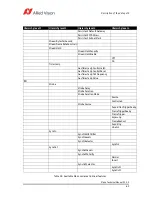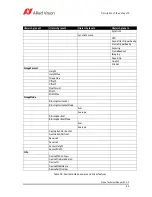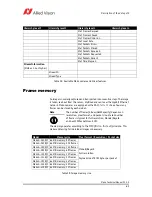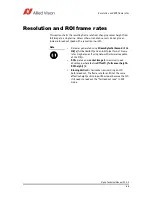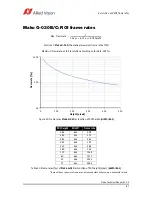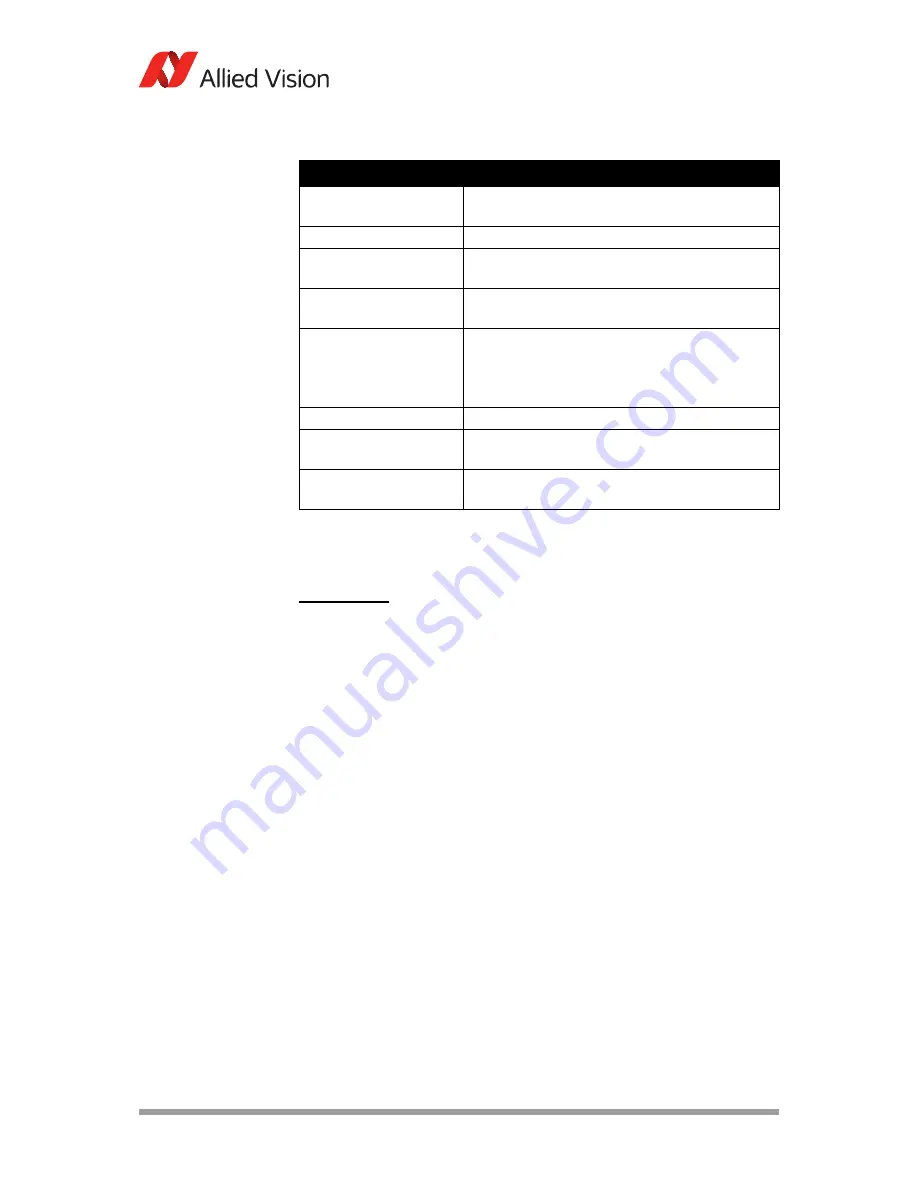
Mako Technical Manual
V3.0.0
52
Camera interfaces
Trigger rules
•
The
end of exposure
will always trigger the next readout.
•
The
end of exposure
must always end after the current readout.
•
The
start of exposure
must always correspond with the interline time if
readout is true.
•
Exposure start delay
equals the readout time minus the registered expo-
sure time.
Triggering during the Idle State
For applications requiring the shortest possible trigger latency and the smallest
possible trigger jitter, the user trigger signal should be applied when imaging
is false and idle is true.
Triggering during the Readout State
For applications requiring the fastest triggering cycle time whereby the camera
image sensor is exposing and reading out simultaneously, the user trigger sig-
nal should be applied as soon as a valid trigger ready is detected.
In this case, trigger latency and trigger jitter can be up to 1 line time since expo-
sure must always begin on an Interline boundary.
Trigger latency
Time delay between the user trigger and the start
of exposure
Trigger jitter
Error in the trigger latency time
Trigger ready
Indicates to the user that the camera will accept
the next trigger
Registered exposure time Exposure time value currently stored in the camera
memory
Exposure start delay
Registered exposure time subtracted from the
Readout time and indicates when the next expo-
sure cycle can begin such that the exposure will
end after the current readout
Interline time
Time between sensor row readout cycles
Imaging
High when the camera image sensor is either
exposing and/or reading out data
Idle
High if the camera image sensor is not exposing
and/or reading out data
Note
The
user trigger pulse width
should be at least three times the
width of the trigger latency as indicated in
Specifications
chapter on page 16.
Term
Definition
Table 27: Trigger definitions

